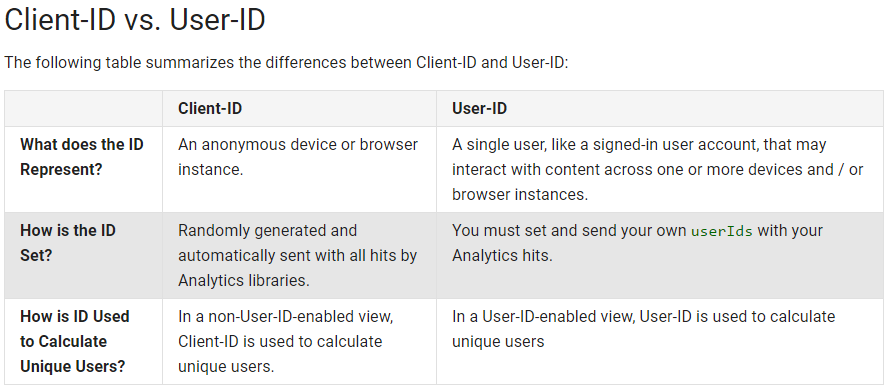The docs describe the clientId as:
This anonymously identifies a particular user, device, or browser instance. https://developers.google.com/analytics/devguides/collection/protocol/v1/parameters#cid
It can be used to send server side hits to analytics while still tying them to a particular user.
There is also a feature in closed beta called userId, which you will be able to pass once a user has authenticated: https://developers.google.com/analytics/devguides/collection/analyticsjs/user-id
userId is fairly self-explanatory. However, UA also allows you to pass your own clientid if you choose to. For developing CRM type tools, can one just associate the clientid with a user in the same way that you would with a userid? The goal is primarily to be able to track offline interactions and connect them with visitors in Analytics.

